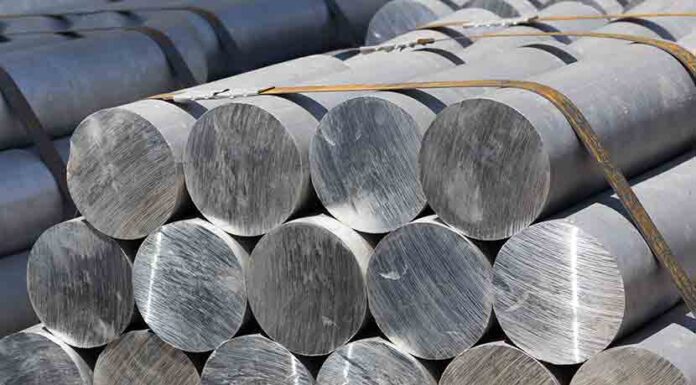
A recent decision by U.S. President Donald Trump to double aluminum import tariffs has significantly escalated trade tensions between the United States and the European Union, with the aluminum scrap trade now at the center of a growing dispute. While the new 50% tariffs are ostensibly applied across the board, one notable exception—the exclusion of aluminum scrap—has created a sharp divergence in market dynamics and triggered concerns of a looming “scrap war.”
Effective since the beginning of March, the original 25% tariff increase had already led to a measurable uptick in U.S. imports of aluminum scrap. The decision last week to double that rate to 50% has amplified the shift, incentivizing American buyers to outbid competitors abroad and drawing significant volumes of recyclable material from global markets, particularly Europe.
Tariff Gap Spurs Surge in Scrap Imports
Unlike finished or semi-finished aluminum products, aluminum scrap is explicitly exempt from the new U.S. tariff regime. The Trump administration justified this carveout on the grounds that scrap constitutes a critical input for domestic manufacturers, especially in mid-stream operations that convert raw aluminum into usable products like can sheet and auto parts.
As a result of the policy, U.S. imports of aluminum scrap jumped to over 80,000 tons in March, the highest monthly level since 2022. The largest increases came from Canada and Mexico, traditional suppliers to the U.S. aluminum market. However, European exports have also surged in the first quarter of 2025, according to data released by the European Aluminium association.
The organization reported a marked spike in aluminum scrap exports from EU countries to the U.S., a trend it says is accelerating following the doubling of U.S. import tariffs. This has sparked concerns within the EU about “scrap leakage”—the loss of secondary raw materials needed to support Europe’s own recycling and manufacturing industries.
Europe Weighs Countermeasures Amid Circular Economy Concerns
The growing outflow of scrap aluminum from the EU to the U.S. is prompting European policymakers to consider retaliatory trade measures. Paul Voss, Director General of the European Aluminium association, called on the European Commission to impose immediate export duties on aluminum scrap in order to curb further losses. “We are facing a full-blown scrap crisis,” Voss said.
The European Commission, which earlier this year identified high aluminum scrap exports as a key obstacle to its “Circular Economy” goals, has pledged to address the issue. A March Action Plan targeting the aluminum and steel sectors outlined the possibility of reciprocal export tariffs, particularly aimed at countries deemed to be applying “unfair subsidies” to their recycling industries.
A final decision on appropriate trade actions is expected by the third quarter of 2025, but industry groups are pressuring officials to act more quickly given the widening price gap between the U.S. and European aluminum markets.
Premium Soars as U.S. Market Diverges
The U.S. Midwest aluminum premium—an additional cost paid by buyers to secure physical delivery of the metal—has reached a record high of $1,325 per metric ton. This premium now significantly exceeds the global benchmark London Metal Exchange (LME) price, currently around $2,430 per ton for spot deliveries.
Historically, the Midwest premium reflected transportation and logistical costs. However, analysts say the current spike largely represents the impact of tariffs and supply constraints, with U.S. consumers paying substantially more than their international counterparts.
While end consumers are likely to bear the cost of these premiums, mid-stream fabricators that convert aluminum into semi-finished products are expected to benefit. A report by Harbor Aluminum, commissioned by the Beer Institute during Trump’s previous term, found that processors passed on the tariffs in full—even when sourcing scrap domestically. The new tariff structure may deepen this trend, as processors seek to maximize profits by blending cheaper domestic and imported scrap.
Global Supply Chain Reactions: China in the Middle
The implications of this developing trade rift extend beyond Europe and North America. China, the world’s largest consumer of aluminum scrap, finds itself squeezed by both increased U.S. competition in the Asian scrap market and prospective European export controls.
China has imported around 1.8 million tons of aluminum scrap annually over the past two years, drawing material from across Asia as well as the United States and Europe. In 2024, Beijing eased import purity requirements for aluminum and copper scrap, aiming to bolster domestic recycling in light of production limits on new primary aluminum smelting capacity.
As Europe weighs export restrictions and the U.S. aggressively buys up available scrap, Chinese buyers are increasingly facing limited access and higher prices for critical feedstock. The possibility of a fractured global scrap market raises concerns about supply security and cost pressures for China’s vast aluminum sector, which is under government mandates to shift more of its production toward recycled inputs.
Strategic Trade Realignment Underway
The current U.S. policy shift represents more than just a tariff increase—it marks a reordering of global trade flows for aluminum, particularly recyclable material. By exempting aluminum scrap while imposing high tariffs on other forms of the metal, the U.S. has created a financial incentive that could redraw traditional supplier relationships and force other economies to implement protective measures of their own.
In the near term, the tariff policy appears to be achieving some of its objectives: stimulating domestic scrap consumption, increasing material inflows, and potentially supporting U.S. mid-stream processors. However, the broader consequences—strained trade relations with the EU, rising costs for end-users, and heightened competition for limited global scrap supplies—are creating new challenges. The European Commission now faces mounting pressure to act swiftly to protect its recycling infrastructure. Meanwhile, U.S. manufacturers may continue to benefit from an influx of cheaper recyclable inputs, at least until further trade measures are introduced abroad.
The above references an opinion and is for information purposes only. It is not intended to be investment advice. Seek a licensed professional for investment advice. The author is not an insider or shareholder of any of the companies mentioned above.
The post U.S. Aluminum Tariffs Ignite Tensions with Europe Over Scrap Exports, Starting Global Market Realignment appeared first on MiningFeeds.






